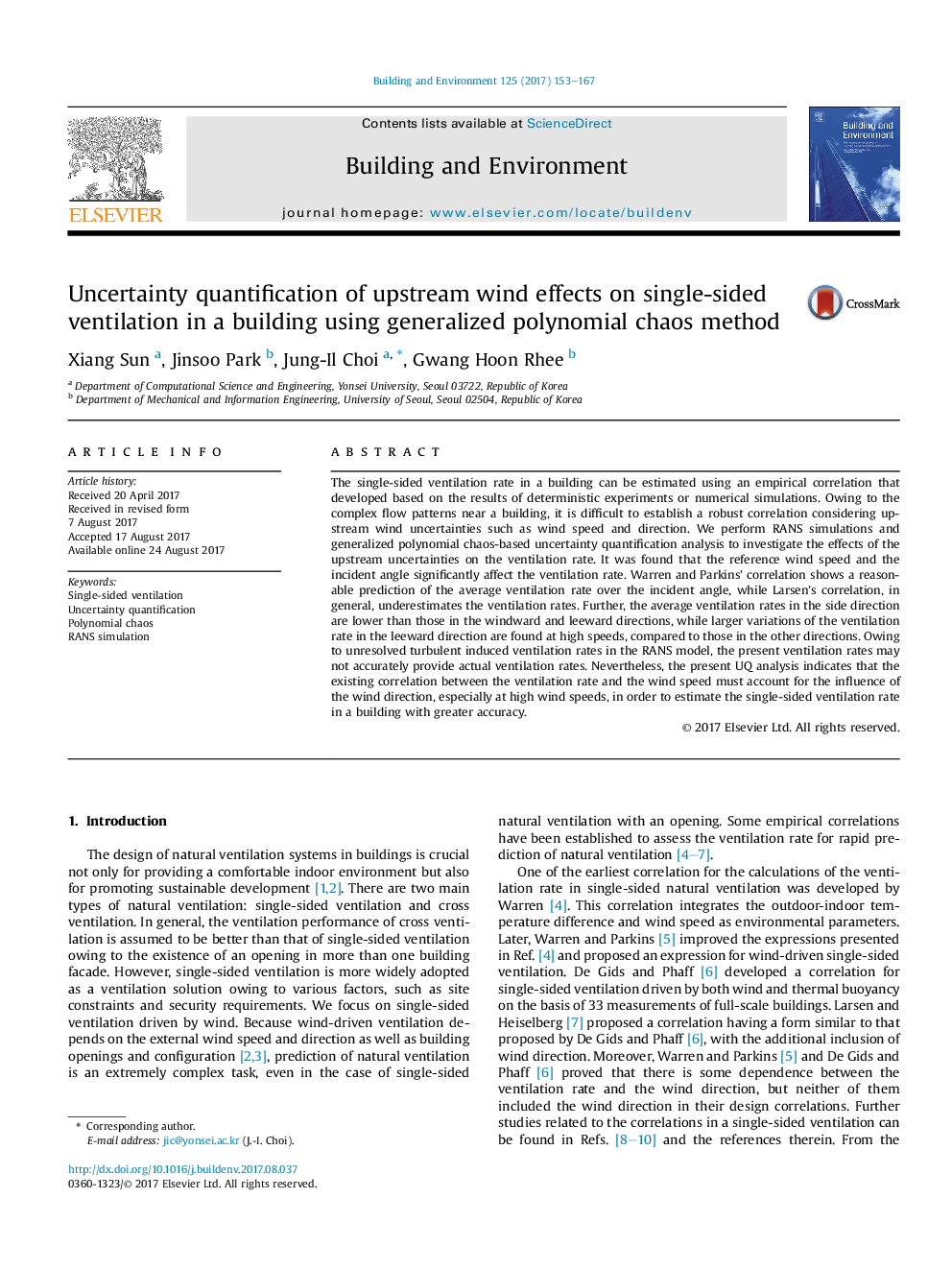| کد مقاله | کد نشریه | سال انتشار | مقاله انگلیسی | نسخه تمام متن |
|---|---|---|---|---|
| 6479220 | 1428367 | 2017 | 15 صفحه PDF | دانلود رایگان |
- Numerical simulations of single-sided ventilation in a building are performed using the RANS model.
- Uncertainty quantifications (UQ) of upstream wind effects on ventilation rates are analyzed using the gPC approach.
- Warren and Parkins' correlation gives a reasonable prediction of the average ventilation rate over the incidence angle.
- The influence of the wind direction should be considered in the existing ventilation correlation.
The single-sided ventilation rate in a building can be estimated using an empirical correlation that developed based on the results of deterministic experiments or numerical simulations. Owing to the complex flow patterns near a building, it is difficult to establish a robust correlation considering upstream wind uncertainties such as wind speed and direction. We perform RANS simulations and generalized polynomial chaos-based uncertainty quantification analysis to investigate the effects of the upstream uncertainties on the ventilation rate. It was found that the reference wind speed and the incident angle significantly affect the ventilation rate. Warren and Parkins' correlation shows a reasonable prediction of the average ventilation rate over the incident angle, while Larsen's correlation, in general, underestimates the ventilation rates. Further, the average ventilation rates in the side direction are lower than those in the windward and leeward directions, while larger variations of the ventilation rate in the leeward direction are found at high speeds, compared to those in the other directions. Owing to unresolved turbulent induced ventilation rates in the RANS model, the present ventilation rates may not accurately provide actual ventilation rates. Nevertheless, the present UQ analysis indicates that the existing correlation between the ventilation rate and the wind speed must account for the influence of the wind direction, especially at high wind speeds, in order to estimate the single-sided ventilation rate in a building with greater accuracy.
Journal: Building and Environment - Volume 125, 15 November 2017, Pages 153-167
